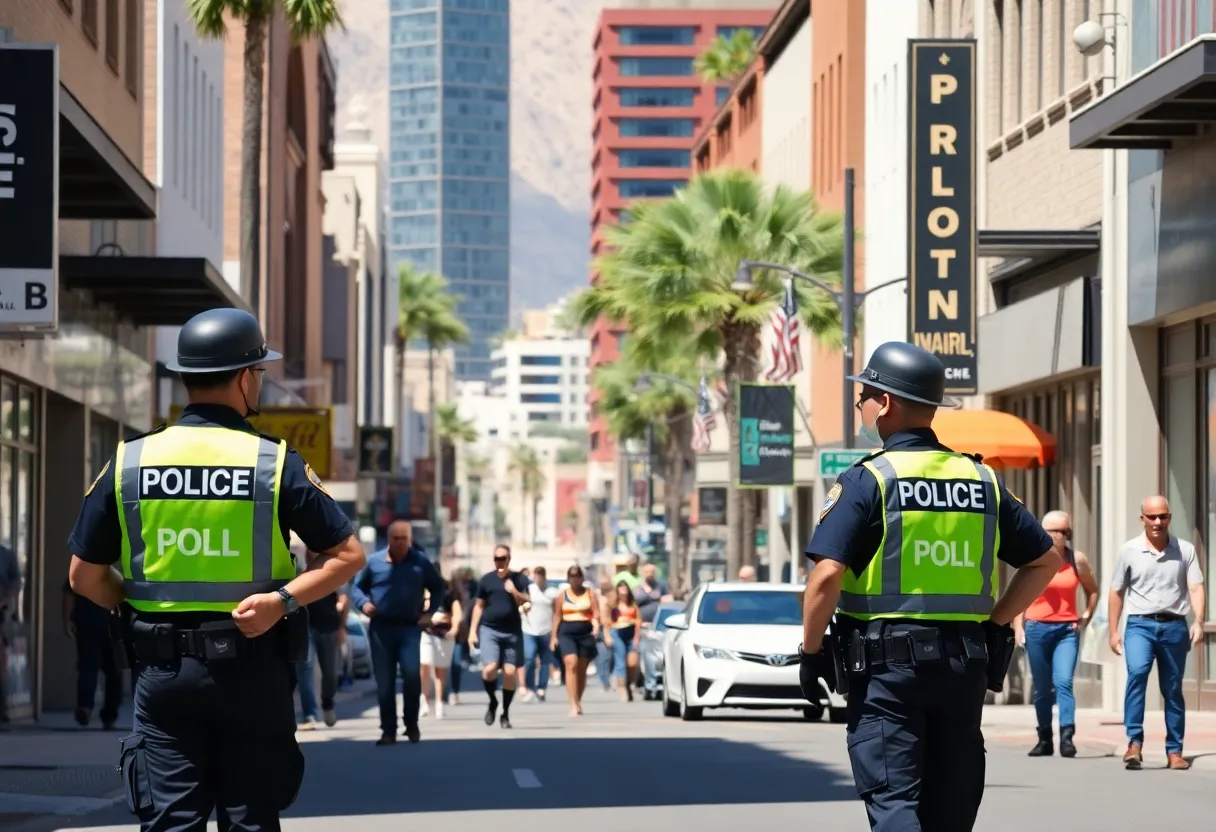Tucson, October 15, 2025
Tucson Mayor Regina Romero has initiated a shift in police policy allowing for more proactive measures against increasing crime rates, particularly property crimes. This decision aligns with community calls for stronger enforcement and aims to enhance public safety while maintaining open communication with residents. Implementation begins immediately with increased patrols in high-risk areas, reflecting a new approach to balancing law enforcement and community engagement amidst rising crime concerns.
Tucson Mayor Announces Shift in Police Policy to Combat Rising Crime
Tucson, AZ – In a significant policy change, Mayor Regina Romero has authorized local police to adopt more proactive measures against escalating crime rates in key districts. The decision, announced today, responds directly to a recent surge in property crimes and widespread community concerns about public safety. This shift marks a departure from previous approaches, emphasizing immediate action through increased patrols starting right away.
The new policy allows officers to take direct steps to address criminal activity in high-risk areas, aiming to restore confidence among residents. Community feedback, including vocal demands for stronger enforcement, played a pivotal role in this reversal. Local leaders have described the move as a pragmatic balance between security needs and ongoing resident engagement, though some voices express caution over potential community tensions.
Background on Crime Trends Prompting the Change
Recent data highlights a noticeable uptick in property-related offenses across Tucson, including thefts and burglaries, which have strained neighborhood safety. This spike follows a period of public frustration with perceived delays in police response times. The mayor’s office noted that these incidents have been concentrated in several key districts, prompting urgent calls for intervention from affected residents and business owners.
Prior to this announcement, the city’s approach focused more on community policing and dialogue, but rising incidents tested the limits of that strategy. The policy adjustment seeks to bridge the gap by empowering officers while committing to continued conversations with the public to ensure measures do not alienate groups.
Implementation Details and Immediate Actions
Implementation of the new policy begins immediately, with increased patrols deployed to targeted districts. Police resources will prioritize areas with the highest reported crime rates, allowing for quicker interventions in ongoing or suspected illegal activities. This proactive stance is intended to deter potential offenders and provide visible reassurance to the community.
The mayor emphasized that while enforcement will intensify, efforts to maintain open lines of communication remain central. Regular town halls and feedback mechanisms will continue, ensuring resident input shapes how the policy evolves.
Reactions from Stakeholders
Local leaders have welcomed the decision as a forward-thinking step that addresses immediate safety concerns without abandoning collaborative principles. They view it as essential for stabilizing affected areas and preventing further escalation of crime.
On the other side, critics argue that ramping up police activity could heighten existing tensions between law enforcement and certain community segments. Concerns include the risk of over-policing in minority neighborhoods and the need for safeguards to prevent misuse of authority. Despite these worries, supporters counter that the policy’s focus on dialogue will help mitigate such issues.
Broader Context of Public Safety in Tucson
Tucson’s public safety landscape has been under scrutiny for months, with property crimes emerging as a top priority. This policy shift aligns with similar efforts in other cities facing comparable challenges, where balancing enforcement and community relations is key. The mayor’s announcement comes at a time when residents are increasingly vocal about their desire for safer streets, influencing local governance decisions.
Moving forward, monitoring the policy’s impact will be crucial. Metrics such as crime rate reductions and community satisfaction surveys will likely guide adjustments. The goal is to foster a safer environment that supports Tucson’s diverse population without compromising trust in local institutions.
This development underscores the ongoing challenge of adapting public safety strategies to meet evolving urban needs. As patrols increase, residents can expect more visible police presence, which may alter daily routines in key areas. The policy’s success will depend on its execution and the city’s ability to integrate enforcement with inclusive practices.
Potential Long-Term Implications
If effective, the new measures could lead to a measurable decline in property crimes, boosting economic activity in affected districts. However, sustained success requires addressing root causes like economic disparities and social services gaps. The administration plans to pair police actions with community programs to tackle these underlying factors.
Critics’ fears of escalated tensions highlight the delicate balance required. Historical examples in other regions show that proactive policing can reduce crime but sometimes at the cost of community relations if not managed carefully. Tucson’s approach, with its emphasis on dialogue, aims to avoid such pitfalls.
As Tucson navigates this change, the focus remains on creating a secure yet equitable environment. The immediate rollout of patrols signals urgency, while commitments to resident involvement suggest a holistic strategy.
FAQ
What policy change did Tucson Mayor Regina Romero announce?
Tucson Mayor Regina Romero announced a policy shift today, authorizing police to take proactive measures against rising crime rates in key districts.
Why was this decision made?
Following community outcry and a spike in property crimes, the decision aims to enhance public safety while maintaining dialogue with residents.
What are the reactions to the announcement?
Local leaders hailed the move as a balanced step forward. Critics, however, worry it could escalate tensions.
When does the policy take effect?
Implementation begins immediately with increased patrols.
Key Features of the New Policy
| Feature | Description |
|---|---|
| Proactive Measures | Police authorized to take direct action against crime in key districts |
| Response to Community | Driven by outcry and spike in property crimes |
| Implementation Timeline | Begins immediately with increased patrols |
| Positive Reactions | Hailed as balanced by local leaders |
| Criticisms | Worries about escalating tensions |
| Public Safety Focus | Aims to enhance safety while maintaining dialogue |
Deeper Dive: News & Info About This Topic
HERE Resources
Shelter-in-Place Order at Pima Community College Concludes Safely
University of Arizona President Discusses Higher Education Compact
Tucson City Council Rejects Immigration Compact Proposal
UA Police Seek Input on Trump’s Proposed Education Reforms
Tucson City Council Rejects Trump Administration Immigration Compact
Tucson Shooting Investigation Rattles Local Real Estate Market
Sun Tran Bus Operators in Tucson Stage Walkout Over Rising Violence




